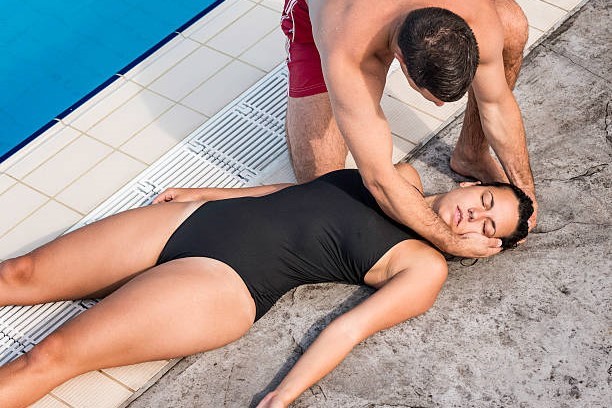When faced with a medical emergency, the public’s ability to respond quickly and confidently can mean the difference between life and death. However, when the patient is a woman, hesitation often takes over, leading to delays in care. This hesitation stems from a lack of preparedness, training, and confidence in navigating perceived sensitivities around female anatomy. Addressing these challenges is vital to ensuring that women receive the same life-saving care as men. By improving public awareness and introducing female-focused training tools, we can overcome these barriers and equip more people to act decisively in emergencies.

Understanding the Hesitation in Female First Aid
Fear of Inappropriate Contact
One of the primary reasons people hesitate to provide female first aid is the fear of inappropriate touch. This concern, while understandable, can have devastating consequences when it delays critical care. In emergencies like cardiac arrest, every second counts, and hesitation can significantly reduce a woman’s chance of survival. A study by ABC News highlights that women are less likely to receive defibrillation during cardiac emergencies, a delay that can cost lives.
Cultural norms and societal perceptions often exacerbate this fear. Many bystanders worry about how their actions might be perceived, particularly in public spaces. This hesitation is especially pronounced in scenarios involving CPR, where physical contact with the chest is unavoidable.
Lack of Confidence in Responding to Female Emergencies
The public’s lack of confidence in responding to emergencies involving women is another contributing factor. Many people are unprepared to navigate the anatomical and biological differences that might arise. For instance, women experiencing heart attacks often display symptoms that differ from the “classic” signs taught in first aid courses, such as chest pain. Instead, they may experience nausea, fatigue, or back pain—symptoms that are less likely to be recognised as critical.
The Role of Female-Specific Training Tools in Female First Aid
One of the most effective ways to address this issue is through the use of female-specific training tools. CPR manikins, which are overwhelmingly male in design, fail to prepare trainees for real-life scenarios involving women. This lack of representation reinforces uncertainty and hesitation when administering first aid to female patients. Research from Bond University reveals a significant gender gap in CPR training, with only one in six manikins used in training being female.
Introducing anatomically accurate female CPR manikins into training programs can bridge this gap. These tools not only familiarise trainees with the physical differences they may encounter but also normalise the idea of providing care to women. By practising on these manikins, responders gain the confidence to act decisively, reducing hesitation and improving outcomes.
Breaking Down Barriers to Female First Aid
Raising Awareness
Education is key to overcoming the fear of inappropriate contact and boosting public confidence. Campaigns that highlight the importance of acting quickly in emergencies can help shift the focus from fear to the life-saving impact of female first aid. By normalising the idea that providing care is an act of compassion, not impropriety, we can encourage more people to step in when it matters most.
Updating Training Standards
First aid organisations have a critical role to play in addressing these barriers. Updating training programs to include female CPR manikins and scenarios is a necessary step towards achieving gender-inclusive first aid. Courses should also address the unique symptoms women may exhibit during medical emergencies, ensuring that trainees are prepared to recognise and respond appropriately. A recent article in the Oxford Academic Journal underscores the importance of inclusive training practices to improve outcomes for women in emergencies.
Empowering Everyone to Deliver Female First Aid
The hesitation to provide first aid to women is not an insurmountable challenge—it’s a call to action. By introducing female-focused training tools, raising awareness about the importance of quick action, and updating training standards, we can equip the public with the skills and confidence to save lives, regardless of gender.
Female first aid is about compassion, care, and courage. In moments of crisis, these qualities must take precedence over fear. With the right tools and education, we can ensure that every individual, man or woman, receives the help they need when it matters most.
Ready to Take the Next Step?
What’s your next step? Are you ready to assist anyone at anytime? Do you have the confidence that you could deliver first response care appropriately when called upon?
Being confident is the first step to helping someone in need. Boost your confidence by updating your First Aid and CPR knowledge and training.
Book a course with one of our fantastic partners, and make sure you’re prepared whatever the circumstances.
